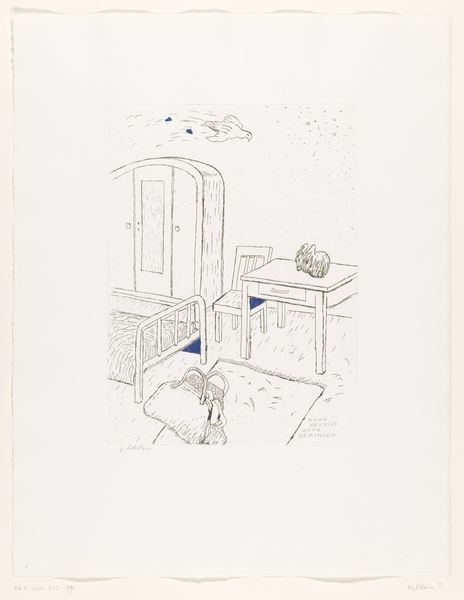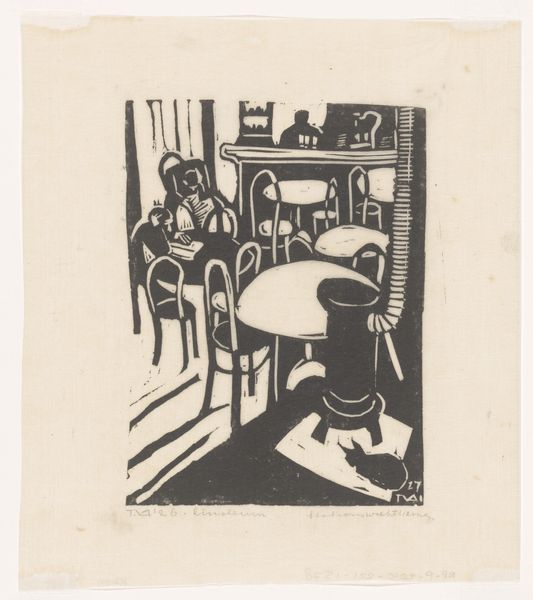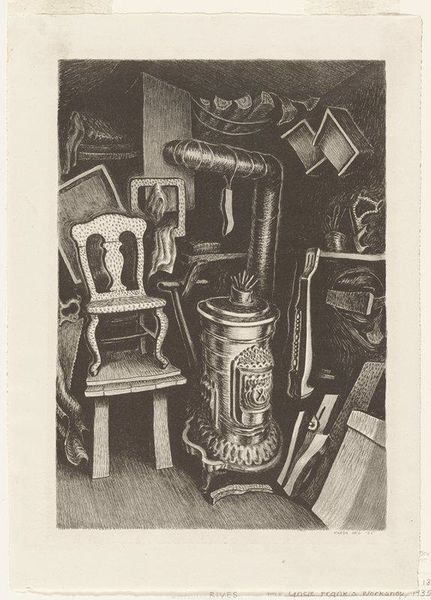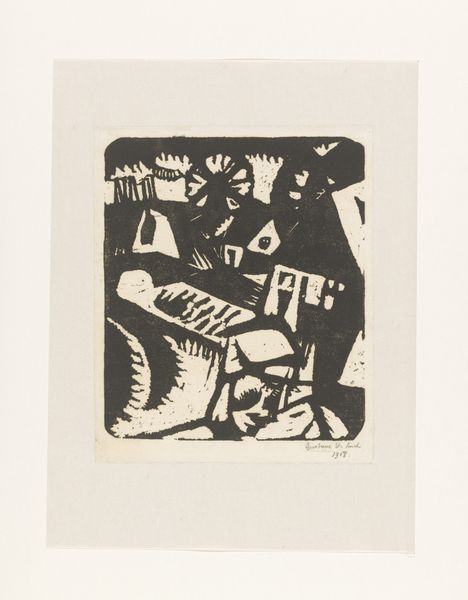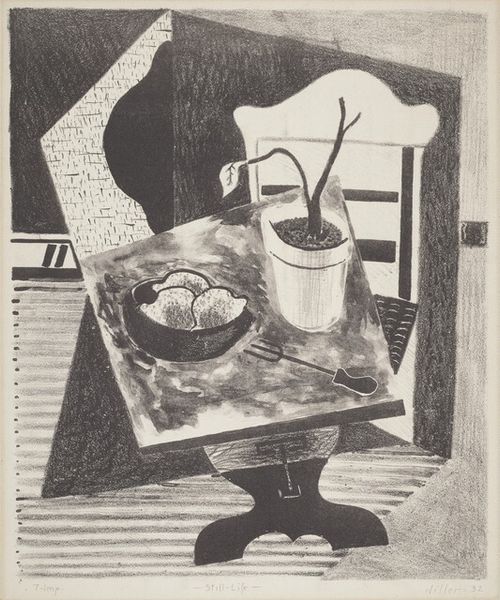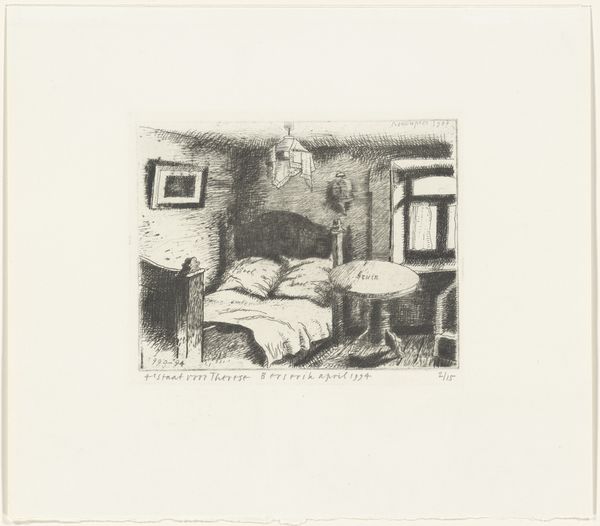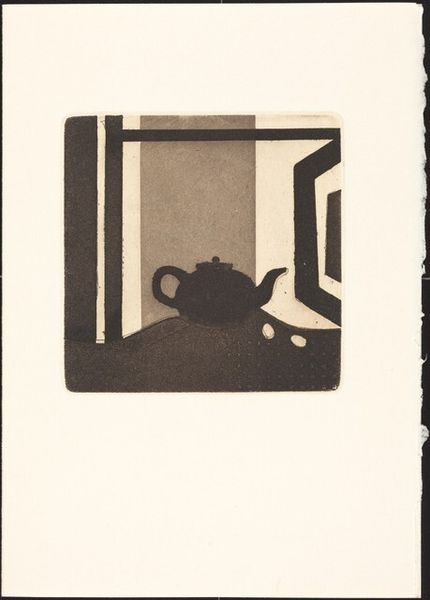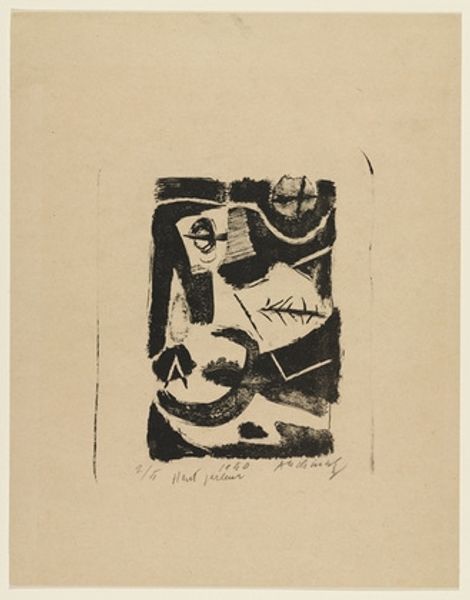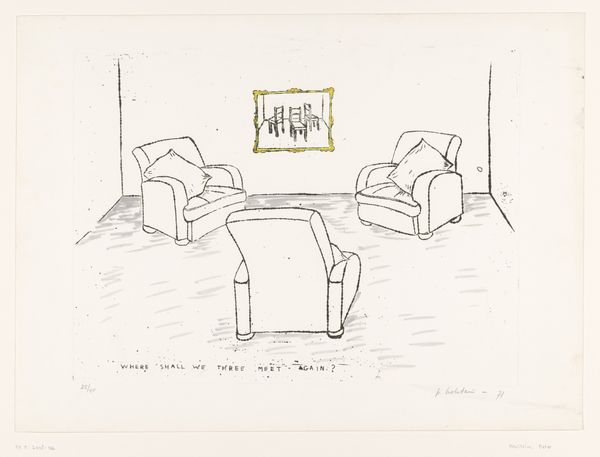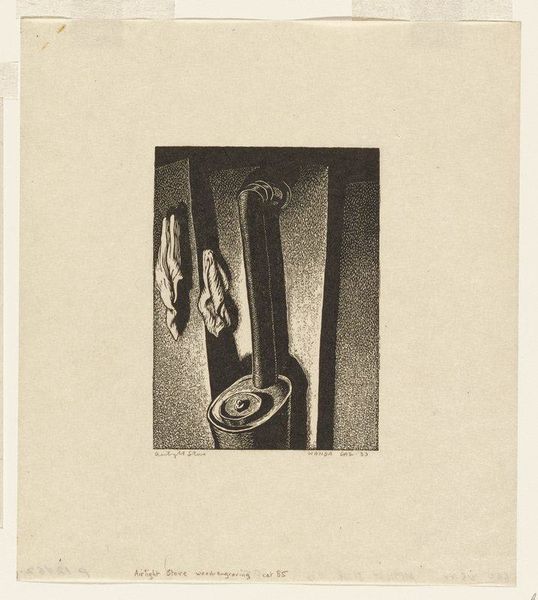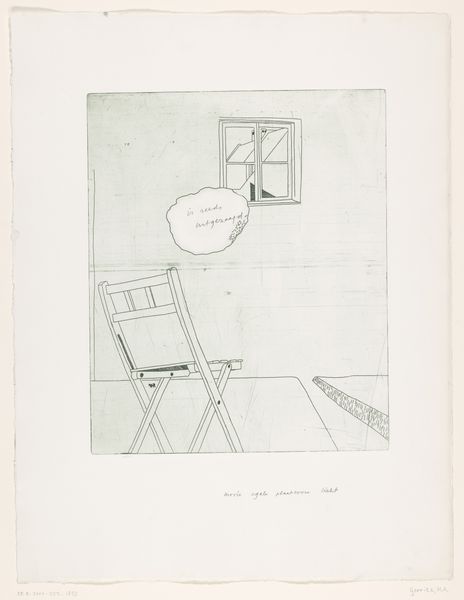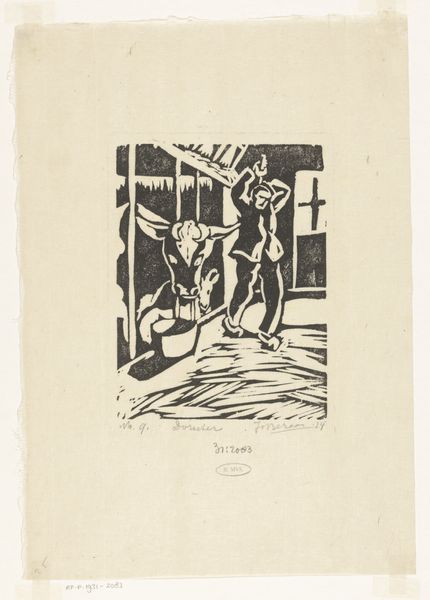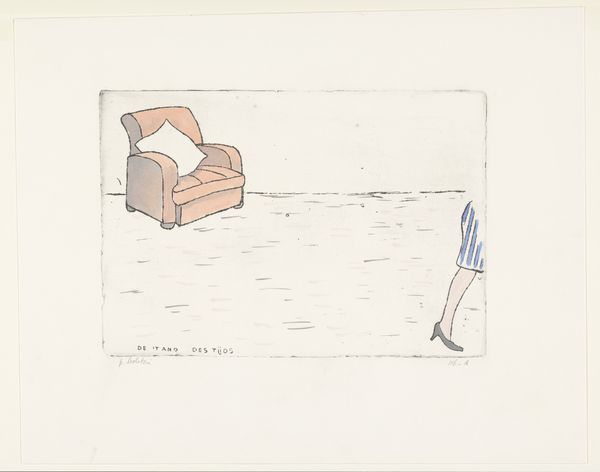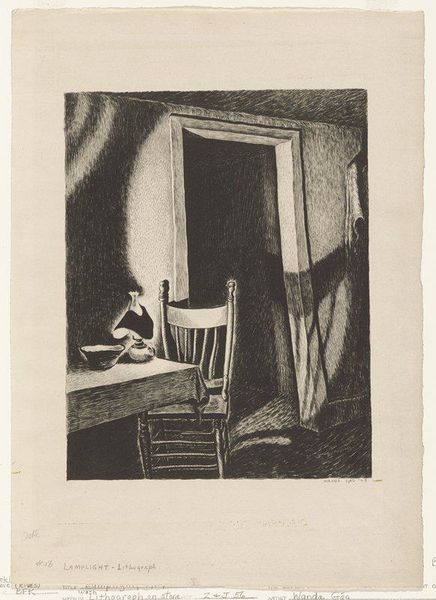
Dimensions: image: 11.11 × 8.57 cm (4 3/8 × 3 3/8 in.) sheet: 25.24 × 17.46 cm (9 15/16 × 6 7/8 in.)
Copyright: National Gallery of Art: CC0 1.0
Curator: Standing before us, we have Roy Lichtenstein's "Study for Still Life with Cash Box" from 1976, rendered in mixed media on paper. What’s your first impression? Editor: It has the feel of a quick sketch, like a thought jotted down visually. All in blues and greys – makes it a little melancholy, doesn't it? Kind of hushed and still. Curator: Indeed, its visual simplicity is quite deliberate. Lichtenstein's studies often reveal his engagement with the industrial production of images. The subject matter – a cash box, a lamp – references everyday commerce. Editor: So, not just the 'what' but the 'how' of its creation becomes the point. The benday dots usually so prominent in his larger pieces are absent, drawing attention instead to the marks themselves and the hand of the artist? Curator: Precisely. Lichtenstein elevated what would otherwise be considered mundane subjects, pointing to how we interact with consumer objects, our engagement in processes that affect distribution and our capital exchange. Think of Warhol and his soup cans. Editor: It's interesting how, despite the somewhat cold, calculated aesthetic, the hand is so evident. You can see the stroke of each pencil line. There’s a ghost of emotion there, of humanness, fighting to peek through. Curator: I see the geometric patterning playing an important role here too. Note the use of shading to suggest form without resorting to naturalistic representation. The influence of early Modernism is evident, stripping subjects down to component shapes. Editor: I wonder if he was thinking of Hopper at all. The muted palette, the isolation of everyday objects... a similar feeling, maybe, of an America at once vibrant and lonely. But with less of the nostalgic aura and more playful artifice. Curator: A keen observation, as Lichtenstein undoubtedly challenged viewers to look at the mundane with a fresh eye and examine both how objects are perceived and then brought to a wider consumer landscape through reproduction, branding, or commerce. Editor: I came into this wanting a shot of color but now I’m really struck by its quiet intelligence. This sketch reveals a process. It really is a little window into a larger statement. Curator: The work makes you appreciate Lichtenstein's skill not just in mimicry, but as an active contributor to conversations around art production. Editor: I totally agree. Now, that humble cashbox looks to be overflowing with value.
Comments
No comments
Be the first to comment and join the conversation on the ultimate creative platform.
